What’s a snuffle mat for dogs? You'll love these fun and safe pet toys
Snuffle mats are a form of enrichment or "work to eat" toy, designed with the purpose of keeping dogs entertained and mentally stimulated.
Snuffle mats are a form of enrichment or "work to eat" toy, designed with the purpose of keeping dogs entertained and mentally stimulated.
By Kate Young Flirt poles are basically cat toys for dogs. They're great for keeping your hands safe during games of tug-- the pole and rope will put a few feet between dog teeth and your fingers. They can really help a dog burn energy, indoors or outdoors, without you, dear human, having to run laps. We sell flirt poles by Squishy Face at our store, but we also have lots of clients who make their own. Here's how. You only need three things:
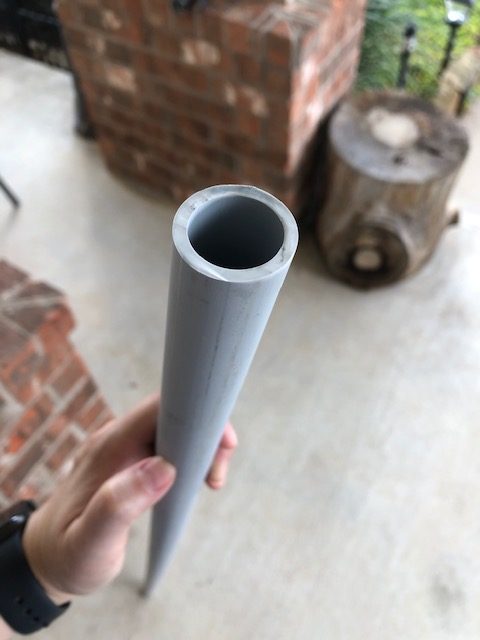 Step 2: Pull rope through pipe.
Step 2: Pull rope through pipe.
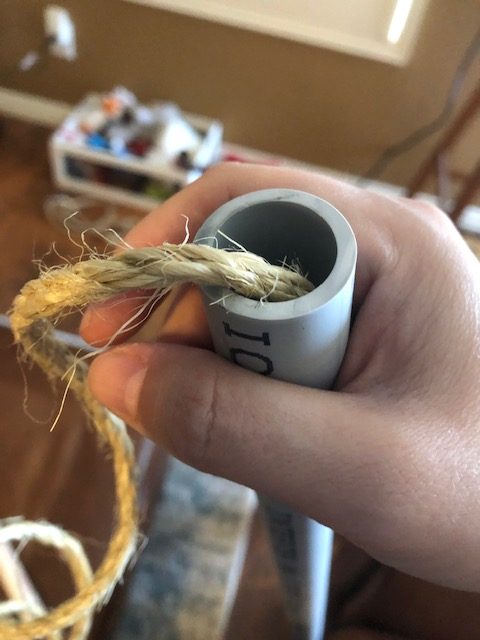 Step 3: Tie a knot at the end of the rope so it won't slide through.
Step 3: Tie a knot at the end of the rope so it won't slide through.
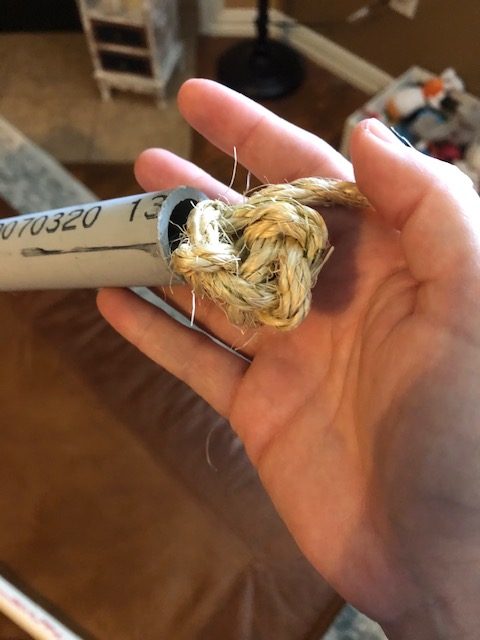 Step 4: Decide on the length of the rope. No right answer here! Your flirt pole, your choice!
Step 4: Decide on the length of the rope. No right answer here! Your flirt pole, your choice!
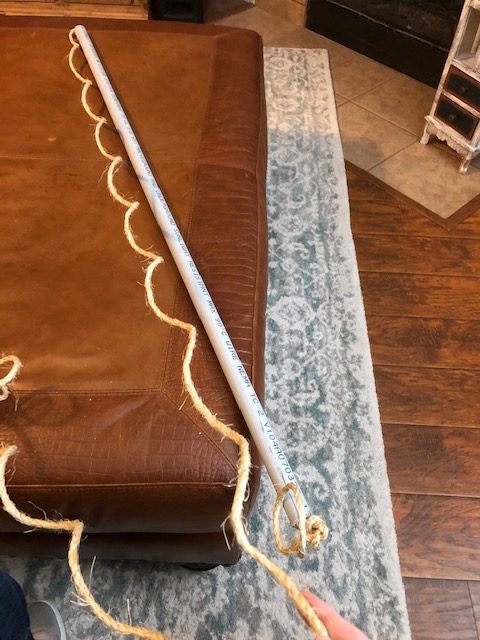 Step 5: Tie toy to the end of rope. Knot it well as it will take a beating! You can also tie a ball at the end if you prefer.
Step 5: Tie toy to the end of rope. Knot it well as it will take a beating! You can also tie a ball at the end if you prefer.
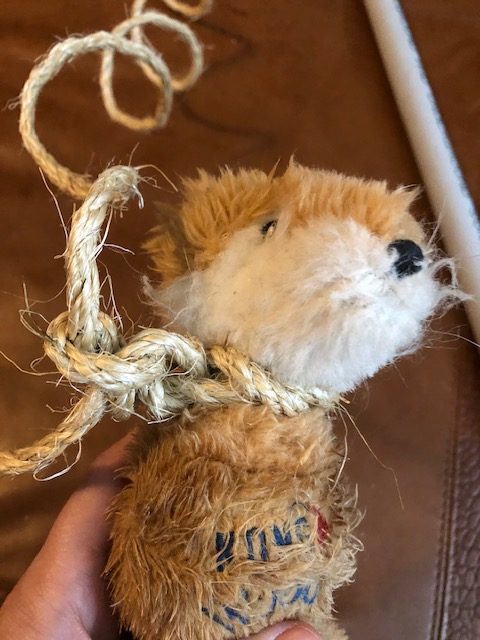 Step 6: Marvel at your exciting dog toy!
Step 6: Marvel at your exciting dog toy!
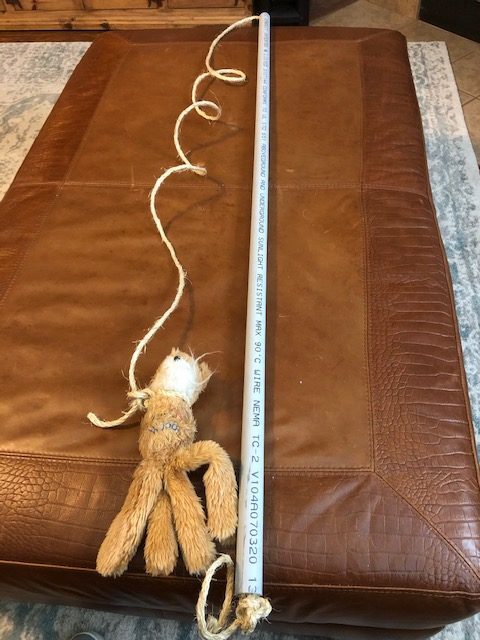 Here is one of our homemade flirt poles in action!
Here is one of our homemade flirt poles in action!
Dogs may love bully sticks, but we humans often worry about what might happen when they chew it down to its tiny end. While they may eventually be digested, they also might never reach the stomach; it's possible they can become lodged in a dog's throat, which could certainly result in choking. Scary stuff! Another issue: Bully sticks aren't cheap, and they can be chewed down to nothing very quickly.
Inventors around the world are working at developing product that can reduce the likelihood of choking, and make bully sticks last longer. The result is the birth of a new pet toy category: bully stick holders. Here are some of the ones we've tried with our students:

Pros: Dogs really enjoy the mix of a toy that is both bouncy (thanks to its rubbery ends) and tasty. While the bully stick is enclosed in plastic, enough of it is exposed for satisfying chew-ability.
Cons: Not great for heavy chewers, who tend to be able to crack the entire thing open, sooner or later. Sometimes, especially clever dogs are able to push or pull the bully stick out of it from the end.
Cost: $24


Pros: A nice, simple design that holds a bully stick in place with a screw that clamps down on it, making it pretty hard to get at.
Cons: It is really designed for use with a Himalayan chew. To use it with a bully stick, you need the thickest one you can find. Some people dislike the fact that you need to have a screwdriver on hand to put it it to use; after repeated use, we've found the top of the screw tends to degrade.
Cost: $11

Pros: Made by the Montana-based company Westpaw, the Qwizl slips over the bully stick like a thick rubber sleeve. It is recyclable, latex-free, BPA-and-phthalate-free, FDA compliant, and comes with a lifetime guaranty.
Cons: Most of the bully stick is covered by the toy, which means much of it will simply never get chewed, which is a bit of a waste. Also, unless you have a bully stick that is precisely the right size, it can be hard to get it into the hole; many bully sticks are simply to thick to use.
Cost: $16 (small), $20 (large)


Pros: Quite challenging for a dog to excavate the bully stick as it is only partially exposed, in the middle. The toy is also very versatile as it can also be used with a Himalayan chew, or the bottom and top pieces can be removed from the middle part and then put back together to form a little treat-dispensing ball.
Cons: It was really designed for use with a Himalayan chew; for use with most bully sticks, you need to use one (or more) extenders.
Cost: $37 (including one extender)

Pros: The Everchew has a particularly clever design in that it has a pin that goes through a bully stick in order to hold it in place at its base. This makes it pretty much impossible for a dog to dislodge the end. Learn more about the Everchew in this School For The Dogs Podcast interview with its inventor, Kirby Kendall.
Cons: Unfortunately, The Everchew is not yet available for sale, but you can follow the Everchew folks on Facebook to get production updates. It also can only be used with thick bully sticks that have a small hole drilled into them. Kendall intends to sell these along with the bully sticks, but it isn't difficult to drill a hole yourself if you have a drill and a small drill bit.
Cost: $19
The Bully Buddy 
Pros: Screws tightly onto the bottom of bully sticks of all lengths and widths; leaves most of the bully stick exposed.
Cons: This is the only product in this list that we haven't tested ourselves yet but we've heard reports of some dogs managing to pull out the stick.
Cost: $25
Does your dog wolf down is food? Help him slow down with some of the cleverly designed food bowls we discussed in this recent podcast episode.
Fast eating can cause excess gas and can lead to gastrointestinal issues. But those aren't the only reasons to slow down your dog's eating habits: you can also help make life all the more enjoyable by making mealtime last longer. Slow Food Bowls present little mouth and brain challenges that can help you can extend the amount of time it takes your dog to eat his meal, while also upping the energy he expends getting at his food. Dogs like to have jobs, and if we don't give them jobs, they too often assign themselves their own occupations, which usually aren't careers we want them to have! Food toys can help tire your dog out in an appropriate way, and help satiate some of that need he has to solve problems.
Here are some great bowls (each of which can be used with dry food, frozen food, raw food, wet food or treats) that will help your dog gain a sense of purpose while he eats.
The Northmate Green Feeder, made in Denmark, is a sturdy toy that has a small lip, which helps assure that food (or water you may add to the food) doesn't spill out. 
Although it is marketed as a toy for cats, the Northmate Pink Feeder (aka the "Catch") is great for dogs, who will sometimes use their paws (in addition to their snouts and tongues) in order to excavate food from the crevasses.

Similar to the Northmate Green Feeder, the Silicone Shark Fin Bowl folds up easily, making it great for traveling. You can also cut it into a circle and place it inside of your dog's normal food bowl.
The Outward Hound Fun Feeders are cute little bowls that have different clever patterns in them that create little obstacle courses for dog tongues. Small rubber feet help keep them from sliding around. 
The Buster Maze Bowl, also designed in Denmark, is a sturdy, large bowl that dogs find endlessly challenging. Freeze wet food in it to make it even harder! 
We love work-to-eat toys at Store For The Dogs. Not familiar with this kind of dog toy? You've probably heard of the first one that was big on the scene: The Kong. Here are eight things you didn't know about this iconic dog toy.
...aren't just for peanut butter! There are lots of recipes for stuffing a Kong.
...were developed in the 1970s by a 25-year-old Colorado auto mechanic named Joe Markham who was trying to get his dog, Fritz, a retired police dog, to stop chewing on rocks.
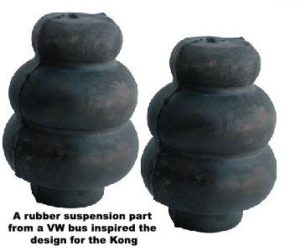 ...have a design based on a rubber suspension part from a VW bus. Markham's dog enjoyed chewing on various car parts he found in the garage, but was specially interested in a bulbous, hollow black part he found.
...have a design based on a rubber suspension part from a VW bus. Markham's dog enjoyed chewing on various car parts he found in the garage, but was specially interested in a bulbous, hollow black part he found.
...were initially shunned by all the pet stores Markham approached to carry it. Nevertheless, he poured all his money into a commercial saying that it was "Available at your favorite pet shop," in the hopes that shops would want to stuck it if they got a lot of calls from people asking for it. ...bear an uncanny resemblance to the 28,000 year old Venus de Willendorf sculpture.
... were called "Tuffys" for a period of time.
...were named because one of the early distributors was a company called King, and someone remarked that the toy looked like King Kong's ear plug.
...fit into a special dispenser called the KongTime which could dispenser four of them over the course the course of the day. Sadly, the KongTime is no longer produced, but occasionally one pops up on eBay. Sources: